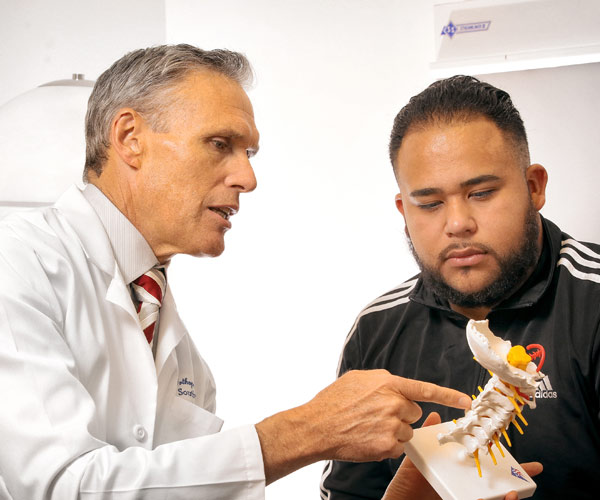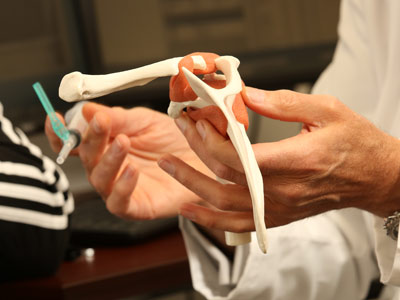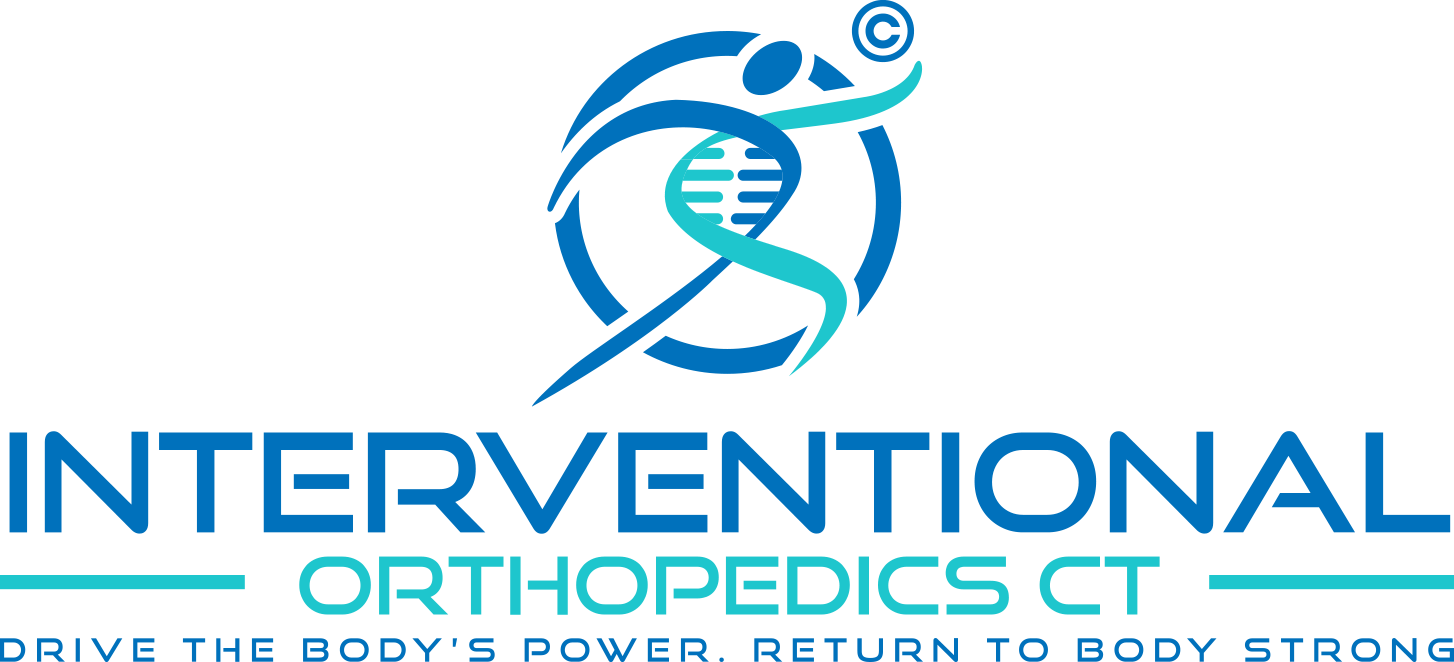Ankle Pain
About Ankle Pain
Ankle pain refers to any type of pain or discomfort in your ankles. Your ankle is an intricate network of bones, ligaments, tendons and muscles. Although it is strong enough to bear your body weight and enable you to move, your ankle can be prone to injury and pain. This pain could be caused by any trauma, like a sprain, or by a medical condition, such as arthritis. An ankle sprain is one of the most common causes of ankle pain, making up 85 percent of all ankle injuries. A sprain occurs when your ligaments, the tissues that connect bones, tear or get overstretched. Most ankle sprains are lateral sprains, which occur when your foot rolls, causing your outside ankle to twist toward the ground. This action stretches or rips the ligaments of the ankle that hold the bones together. Rolling the ankle can also cause damage to the cartilage or tendons of your ankle. A sprained ankle often swells and bruises for about seven to fourteen days. However, it may take a few months for a severe injury to heal fully. Once healed, the sprained ankle is sometimes permanently weaker and less stable than the other ankle. The greatest risk factor for ankle sprain is having a previous ankle sprain.
Symptoms of Ankle Pain
You might feel the pain on the inside or outside of your ankle or along the Achilles tendon, which connects the muscles in your lower leg to your heel bone. Sometimes the pain is a sharp sticking pain and other times, the pain can be a constant, dull ache. The pain may be so intense that that you have difficulty walking, especially on uneven surfaces, or participating in sports. Ankle pain is often accompanied by swelling, stiffness, tenderness and a feeling of instability-as if the ankle is giving way.

Causes of Ankle Pain
Common causes of ankle pain include an ankle injury or sprain, or arthritis, typically osteoarthritis. Less common causes include injection or referred pain usually from a pinched nerve in the back.
The most common cause for a persistently painful ankle is incomplete healing after an ankle sprain. When you sprain your ankle, the connecting tissue between the bones is stretched or torn. With time and proper rehabilitation, most tissues will heal normally. Sometimes, the connecting ligaments and tendons in the ankle heal improperly and do not support the ankle as they were designed to do. Without thorough and complete rehabilitation, the ligament or surrounding muscles may remain weak, resulting in recurrent instability. As a result, you may experience additional ankle injuries and increased arthritic degeneration in the joint.
Non-Surgical Treatment for Ankle Pain
Acute injuries are treated with ice, relative rest, and oral anti-inflammatory medications followed by therapy to strengthen the muscles with tendons that cross the ankle joint and provide stability. Chronic pain and instability following acute injury can be treated with bracing, orthotics, and activity changes to avoid walking on uneven surfaces, climbing on ladders, or running and cutting activities involved in most sports. Oral pain medications for chronic ankle pain may help to allow participation in painful activities but when used on a daily basis carry significant health risks.
To learn more and get help for ankle pain please Schedule an Appointment with Regenerative Orthopedic & Sports Medicine Specialist Daniel Southern, M.D. in Danbury or Wilton in Fairfield County Connecticut by calling 203-456-5717.


Surgical Treatment for Ankle Pain
a lighted scope and narrow instruments through small incisions in the skin over the ankles. A surgeon may use ankle arthroscopy to remove pieces of cartilage or bone debris from the joint space or to evaluate or repair a damaged ligament.
Ankle Fusion – Ankle Fusion for ankle arthritis involves surgically removing the surfaces of the joints affected by arthritis and joining the bones with plates and screws until they grow together, or fuse. While the procedure leaves the ankle without up-and-down or side-to-side movement, it can be an effective and permanent pain relief option for ankles affected by arthritis. This procedure may not offer the kind of mobility needed to resume sports, fitness or lifestyle activities in a comfortable or functional manner.
Ankle Replacement – While ankle replacement is far less common than hip or knee replacement, replacing a damaged ankle may be an option when arthritis interferes with joint function and causes pain that is not relieved by medication.
In general, recovery time and rehabilitation from surgical treatment of ankle arthritis can be somewhat lengthy and uncomfortable requiring careful pain management.
To learn more and get help for ankle pain please Schedule an Appointment with Regenerative Orthopedic & Sports Medicine Specialist Daniel Southern, M.D. in Danbury or Wilton in Fairfield County Connecticut by calling 203-456-5717.
Regenerative Orthopedic Medicine Treatment for Ankle Pain
Regenerative procedures provide non-surgical treatment options for those suffering from pain related to osteoarthritis, joint injuries, spine pain, overuse conditions, and common sports injuries. These medical procedures are performed by highly-skilled doctors and are used to help reduce pain and improve function. They may help improve your quality of life, return to the activities you enjoy, and avoid the need for surgery or joint replacement*.
*DISCLAIMER: Like all medical procedures, regenerative procedures have a success and failure rate. Patient reviews and testimonials on this site should not be interpreted as a statement on the effectiveness of our treatments for anyone else.

